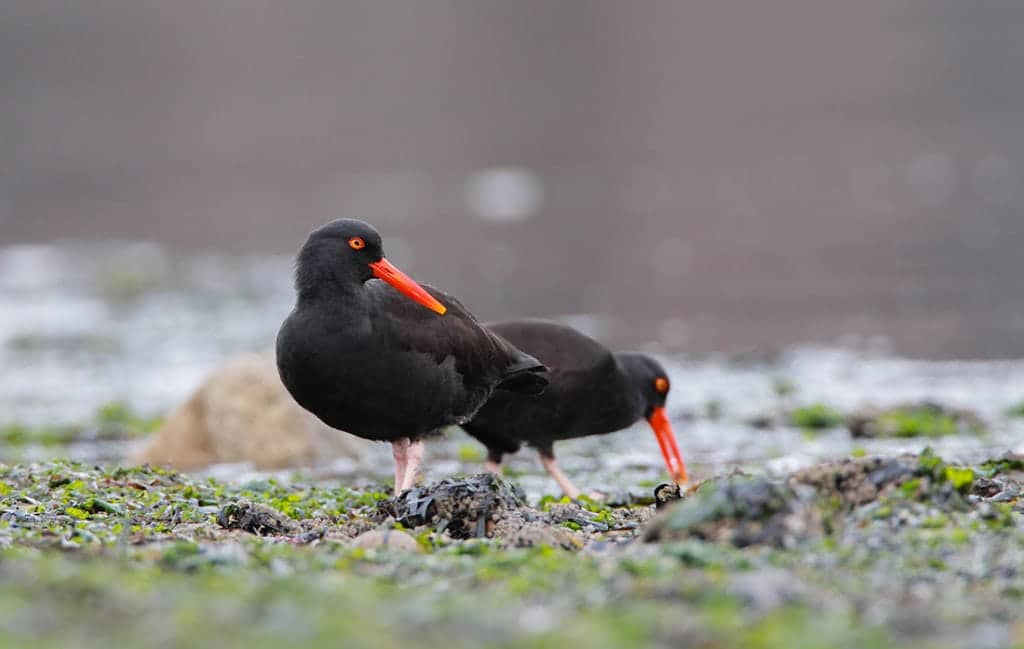Oregon Black Oystercatcher Project
North, Central, and South Coast | May – August
The Black Oystercatcher is a unique shorebird species that is a conspicuous and charismatic bird of the coast. Because of their small global population size, low reproductive rate, and reliance on rocky intertidal habitats, they are considered a “species of high conservation concern” and act as an indicator of intertidal ecosystem health.
Bird Alliance of Oregon is monitoring Black Oystercatchers to provide new information on this species biology including an Oregon-wide population estimate, nesting success, and human disturbance factors.
These efforts are informing better protection for this species and is also an important part of our work to secure better protections for Oregon’s iconic rocky shoreline habitat and Oregon’s marine reserves and protected areas. A critical part of this project is engagement and outreach to local communities up and down the coast.
UPCOMING TRAININGS:
In-Person Training: April 27 | 10 a.m. – 2 p.m. (Cannon Beach City Hall)
Virtual Training: May 2 | 6:30 – 8 p.m.
Partners: U.S. Fish and Wildlife Service, Friends of Cape Falcon, Haystack Rock Awareness Program, U.S. Geological Survey, Friends of Haystack Rock, Audubon Society of Lincoln City, Cape Arago Audubon Society, Kalmiopsis Audubon Society.

About the Survey
- Survey instructions: Please read the Nest monitoring protocol for detailed instructions. Observe active nests to determine if nests are successful (eggs hatch and young leave nest)
- When: Nest monitoring is conducted from May through August.
- Where: 75 sites up and down the coast, from Brookings to Seaside
- Time Commitment: We recommend twice a month or more but also can work with your schedule as needed especially if we can team you up with other volunteers to split monitoring duties up.
- Reporting: Enter your data on a data sheet while at the site (links below) and afterward enter into the appropriate online database (links below)
Volunteer Requirements
- Trainings: We provide non-mandatory in-person trainings on the North, Central, and South coast in late April and May. We will alert you to training dates after you sign up.
- Birding skills: No experience required but you must have good vision and hearing and patience. Black Oystercatchers are easy to identify!
- Equipment: You must have your own pair of binoculars and, ideally, a spotting scope. Site maps are provided.
- Field conditions: Expect surfaces varying from sand beaches and well-maintained trails to steep, overgrown slopes made slippery by weather or loose rock. Some sites may include creek crossings.
- Transportation to and from the survey site(s) is your responsibility.
Contact
If you have any questions about this project contact Joe Liebezeit, Staff Scientist at 971-222-6121, or jliebezeit@birdallianceoregon.org) or Cara Gates, Coastal Community Science Biologist, at cgates@birdallianceoregon.org.

